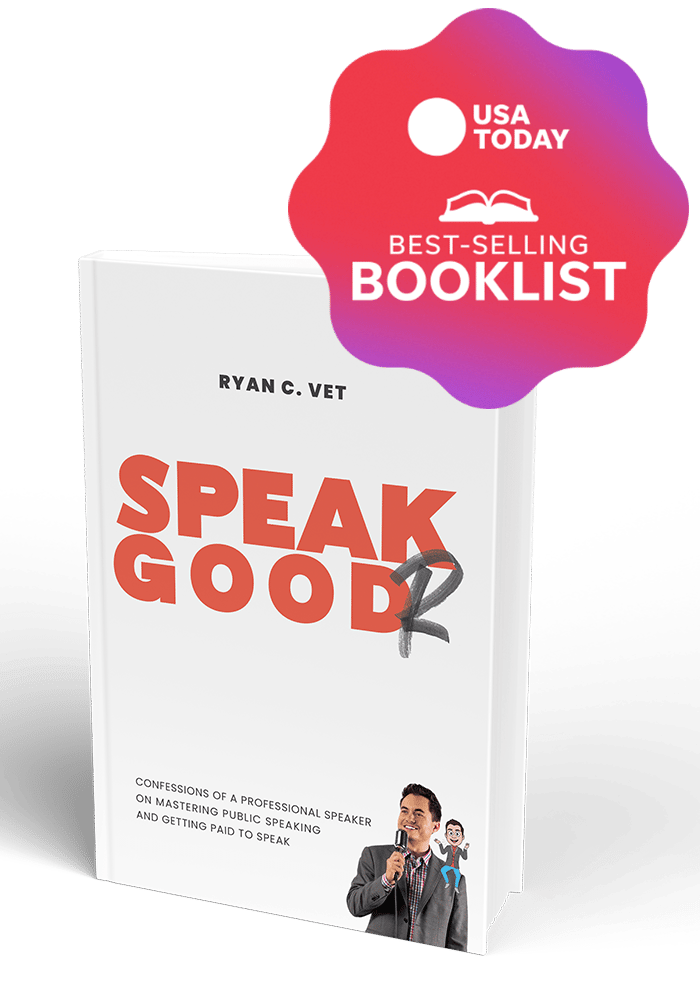- Speak Goodr - Mic Drop
- Posts
- From Jesus to Jelly Roll to the Starfish Story: The Power of Concrete Storytelling
From Jesus to Jelly Roll to the Starfish Story: The Power of Concrete Storytelling
Why Stories Stick—and Stats Slip Away and How You Can Make Your Presentation Memorable.

Do you remember that story about the starfish?
Of course you do because speakers grossly overuse it… But I am not here to fixate on that.
Let’s talk about storytelling.
Not the “once upon a time” kind, but the kind that makes your message unforgettable.
You see, storytelling isn't just a nice-to-have; it's a must-have. It's the difference between being heard and being remembered.
Stories Are Sticky
There's a widely cited claim that stories are up to 22 times more memorable than facts alone. While the exact origin of this statistic is debated, the underlying truth remains: stories resonate.
In their book Made to Stick, Chip and Dan Heath talk about an experiment at Stanford University. Students were asked to give one-minute speeches containing statistics and stories. When tested later, only 5% remembered any individual statistic, but 63% remembered the stories.
Article Continues Below —> Click to continue reading!
Find out why 1M+ professionals read Superhuman AI daily.
In 2 years you will be working for AI
Or an AI will be working for you
Here's how you can future-proof yourself:
Join the Superhuman AI newsletter – read by 1M+ people at top companies
Master AI tools, tutorials, and news in just 3 minutes a day
Become 10X more productive using AI
Join 1,000,000+ pros at companies like Google, Meta, and Amazon that are using AI to get ahead.
Fabels to Personal Testimonies - Be Retellable
So what do Jesus and Jelly Roll and the Starfish Story have in common? Concrete imagery.
A story that is memorable and then, more importantly, retellable.
Consider Jesus. He taught profound truths through simple parables—stories about seeds, sheep, and sons—that have endured for millennia. Regardless of your religious views, think about how common it is to use the language “Good Samaritan” or “Prodigal Son.” It’s a sticky story. It’s concrete. It’s retellable.
💡 But what inspired me to write this post was a recent replay of a video I just saw…
Fast forward to January 2024, when country artist Jelly Roll testified before Congress about the fentanyl crisis. In his five-minute statement, he didn't just present statistics; he painted a vivid picture (almost as vivid as the tattoos on his face):
“Could you imagine the national media attention it would get if they were reporting that a plane was crashing every single day and killing 190 people? But because it's 190 drug addicts, we don't feel that way.”
By equating daily overdose deaths to a plane crash, he transformed abstract data into a relatable and alarming image.
Making the Abstract Concrete
I recently coached a speaker who mentioned a $1.6 trillion figure in their presentation. To make it more tangible, we broke it down:
Big Macs: That's about 408 billion Big Macs.
Time: 1.6 trillion seconds is over 50,000 years.
By translating large numbers into familiar concepts, the audience could grasp the magnitude more effectively. Still, breaking down a trillion is hard for anyone to fathom.
Similarly, a medical professional I worked with described a patient's heart rate and lung fluid in clinical terms. For my own edification and understanding, I asked for help clarifying it. I gave him some thoughts. A few days later he came back to me and had rephrased it:
Heart Rate: "As if they'd run a marathon nonstop all through the night."
Lung Fluid: "Like carrying a gallon of milk in their lungs."
These analogies transformed medical jargon into relatable imagery. And personally finally understood what it meant 😜
“There's always room for a story that can transport people to another place.
J.K. Rowling
Relatability Over Complexity
When speaking to diverse audiences, aim for the common denominator—not by dumbing down your message, but by making it universally accessible.
For instance, I often reference Hyperion, the world's tallest redwood tree at 380 feet. To help audiences visualize this, I compare it to local landmarks of similar height. In Nashville, I once pointed out that the hotel we were in was nearly the same height—and the room audibly gasped.
It’s all about taking the complex, make it relateable to your audience and tell a story so powerful, they simply have to retell it.
BOTTOM LINE:
Stories aren't just for entertainment; they're tools for connection. By making your message concrete and relatable, you ensure it doesn't just inform—it sticks.
Until next time,

P.S. Have a story that transformed your message? Or a story someone shared that has stuck with you? Hit reply—I’d love to hear the story.
 | Want to experience 40 of my wildest speaking adventures and mishaps? Check out my USA TODAY Best-selling book, Speak Goodr! |


Reply